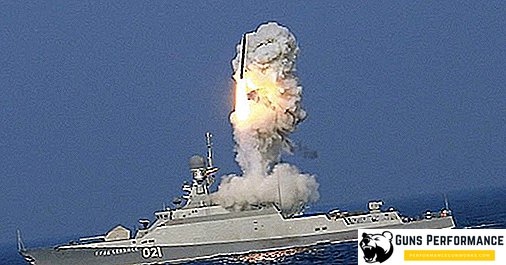An application drawn up by the Scientific and Technical Council of the Scientific Production Association Energomash and the Kurchatov Institute Scientific Research Center went to the table of the Advanced Research Foundation. The application is dedicated to the implementation of a rather ambitious project that will allow the creation of an electrodeless plasma rocket engine. Abbreviated BPRD. Determined a clear list of works, allowing to produce a laboratory sample of the engine.

At its core, an electric propulsion (electric rocket engine) is an electric motor, in which the working fluid is able to acquire acceleration in a special state of the plasma. The original idea of plasma engines belongs to the Soviet physicist A. Morozov. He advanced it back in the 60s. Today's use of such engines is to maintain points of contact with communication satellites.
A new generation of plasma engines, which are going to be manufactured at Energomash, have a capacity of over 100 kW. They can be used not for some geostationary satellites. Such engines are suitable for flights, which are characterized as interstellar.
Recent years in the world marked by several developments of plasma engines. They can be attributed to a new generation. This is a helicon plasma engine from the European Space Agency, which collaborates with the Iranian Space Agency and the Australian National University. This is also the development of Canadian engineers and Americans from the Ad Astra Rocket Company. The American-Canadian engine has a power of 200 kW.

The report "Roskosmos" states that many options for modern electric propulsion have proven themselves on the positive side. They have high momentum and low mass flow of the working fluid. This will allow sending spacecraft to long-distance routes in the near future. But to solve the problem of low thrust. It seriously limits the ability to overcome large space distances. At present, electric propulsion is used by adjusting the orbits of spacecraft of relatively small size. In such an engine, as a rule, the power does not exceed 50 kW. In Earth orbit, such engines are powered by solar panels.
The uniqueness of the latest Russian design
Russian electrodeless plasma rocket engine has the highest energy efficiency. He is able to practice in practice almost any substance as a working medium, to change the magnitude of the specific impulse. Its maximum power parameters are limited only by the power of the high-frequency generator feed. Since restrictions on the impact of a working substance with structural elements have been removed, such an engine has an enormous working resource in its potential.
The possibility of implementing innovative ideas, which are the basis of Russian development, appeared thanks to recent discoveries in the field of thermonuclear fusion. Also, Russian specialists have made great strides towards studying the technologies of high-temperature superconductors and high-frequency generators. Today, scientists have to decide how to optimize plasma processes and develop a high-frequency generator. Improvement subject to the power supply system of the BPRD and, especially, their management. To provide a solution to all these complex engineering and scientific problems, it is necessary to create an experimental and test bench base.
Specialists of the Kurchatov Institute have been working on plasma engines for more than a dozen years. "Design Bureau of Chemical Automation" since 2010 has been studying the problems of electric propulsion. They already have a magnetoplasma-dynamic motor, whose power is 10 kW and a powerful (300 W) high-frequency ion engine.













